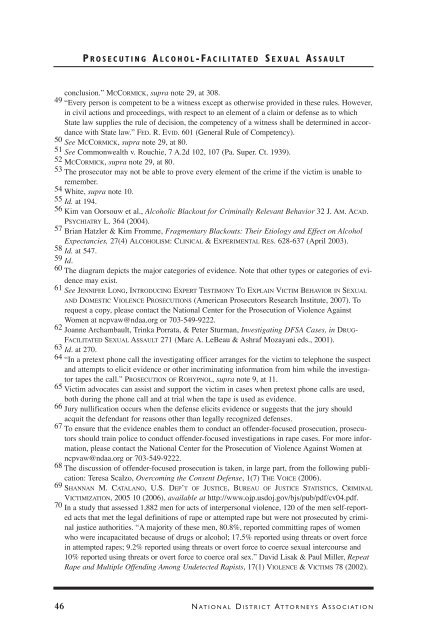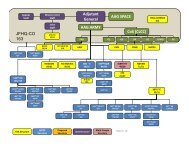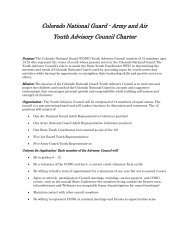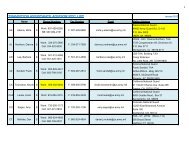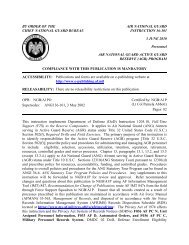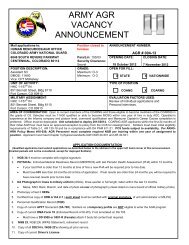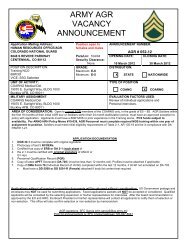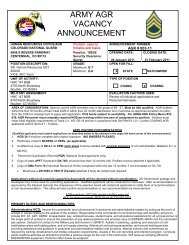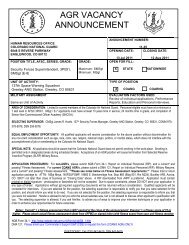Prosecuting Alcohol-Facilitated Sexual Assault - National District ...
Prosecuting Alcohol-Facilitated Sexual Assault - National District ...
Prosecuting Alcohol-Facilitated Sexual Assault - National District ...
Create successful ePaper yourself
Turn your PDF publications into a flip-book with our unique Google optimized e-Paper software.
P R OSECUTING A LCOHOL-FACILITATED S EXUAL A SSAULT<br />
conclusion.” MCCORMICK, supra note 29, at 308.<br />
49 “Every person is competent to be a witness except as otherwise provided in these rules. However,<br />
in civil actions and proceedings, with respect to an element of a claim or defense as to which<br />
State law supplies the rule of decision, the competency of a witness shall be determined in accordance<br />
with State law.” FED. R. EVID. 601 (General Rule of Competency).<br />
50 See MCCORMICK, supra note 29, at 80.<br />
51 See Commonwealth v. Rouchie, 7 A.2d 102, 107 (Pa. Super. Ct. 1939).<br />
52 MCCORMICK, supra note 29, at 80.<br />
53 The prosecutor may not be able to prove every element of the crime if the victim is unable to<br />
remember.<br />
54 White, supra note 10.<br />
55 Id. at 194.<br />
56 Kim van Oorsouw et al., <strong>Alcohol</strong>ic Blackout for Criminally Relevant Behavior 32 J. AM. ACAD.<br />
PSYCHIATRY L. 364 (2004).<br />
57 Brian Hatzler & Kim Fromme, Fragmentary Blackouts: Their Etiology and Effect on <strong>Alcohol</strong><br />
Expectancies, 27(4) ALCOHOLISM: CLINICAL & EXPERIMENTAL RES. 628-637 (April 2003).<br />
58 Id. at 547.<br />
59 Id.<br />
60 The diagram depicts the major categories of evidence. Note that other types or categories of evidence<br />
may exist.<br />
61 See JENNIFER LONG, INTRODUCING EXPERT TESTIMONY TO EXPLAIN VICTIM BEHAVIOR IN SEXUAL<br />
AND DOMESTIC VIOLENCE PROSECUTIONS (American Prosecutors Research Institute, 2007). To<br />
request a copy, please contact the <strong>National</strong> Center for the Prosecution of Violence Against<br />
Women at ncpvaw@ndaa.org or 703-549-9222.<br />
62 Joanne Archambault, Trinka Porrata, & Peter Sturman, Investigating DFSA Cases, in DRUG-<br />
FACILITATED SEXUAL ASSAULT 271 (Marc A. LeBeau & Ashraf Mozayani eds., 2001).<br />
63 Id. at 270.<br />
64 “In a pretext phone call the investigating officer arranges for the victim to telephone the suspect<br />
and attempts to elicit evidence or other incriminating information from him while the investigator<br />
tapes the call.” PROSECUTION OF ROHYPNOL, supra note 9, at 11.<br />
65 Victim advocates can assist and support the victim in cases when pretext phone calls are used,<br />
both during the phone call and at trial when the tape is used as evidence.<br />
66 Jury nullification occurs when the defense elicits evidence or suggests that the jury should<br />
acquit the defendant for reasons other than legally recognized defenses.<br />
67 To ensure that the evidence enables them to conduct an offender-focused prosecution, prosecutors<br />
should train police to conduct offender-focused investigations in rape cases. For more information,<br />
please contact the <strong>National</strong> Center for the Prosecution of Violence Against Women at<br />
ncpvaw@ndaa.org or 703-549-9222.<br />
68 The discussion of offender-focused prosecution is taken, in large part, from the following publication:<br />
Teresa Scalzo, Overcoming the Consent Defense, 1(7) THE VOICE (2006).<br />
69 SHANNAN M. CATALANO, U.S. DEP’T OF JUSTICE, BUREAU OF JUSTICE STATISTICS, CRIMINAL<br />
VICTIMIZATION, 2005 10 (2006), available at http://www.ojp.usdoj.gov/bjs/pub/pdf/cv04.pdf.<br />
70 In a study that assessed 1,882 men for acts of interpersonal violence, 120 of the men self-reported<br />
acts that met the legal definitions of rape or attempted rape but were not prosecuted by criminal<br />
justice authorities. “A majority of these men, 80.8%, reported committing rapes of women<br />
who were incapacitated because of drugs or alcohol; 17.5% reported using threats or overt force<br />
in attempted rapes; 9.2% reported using threats or overt force to coerce sexual intercourse and<br />
10% reported using threats or overt force to coerce oral sex.” David Lisak & Paul Miller, Repeat<br />
Rape and Multiple Offending Among Undetected Rapists, 17(1) VIOLENCE & VICTIMS 78 (2002).<br />
46 N ATIONAL D ISTRICT ATTORNEYS A SSOCIATION


